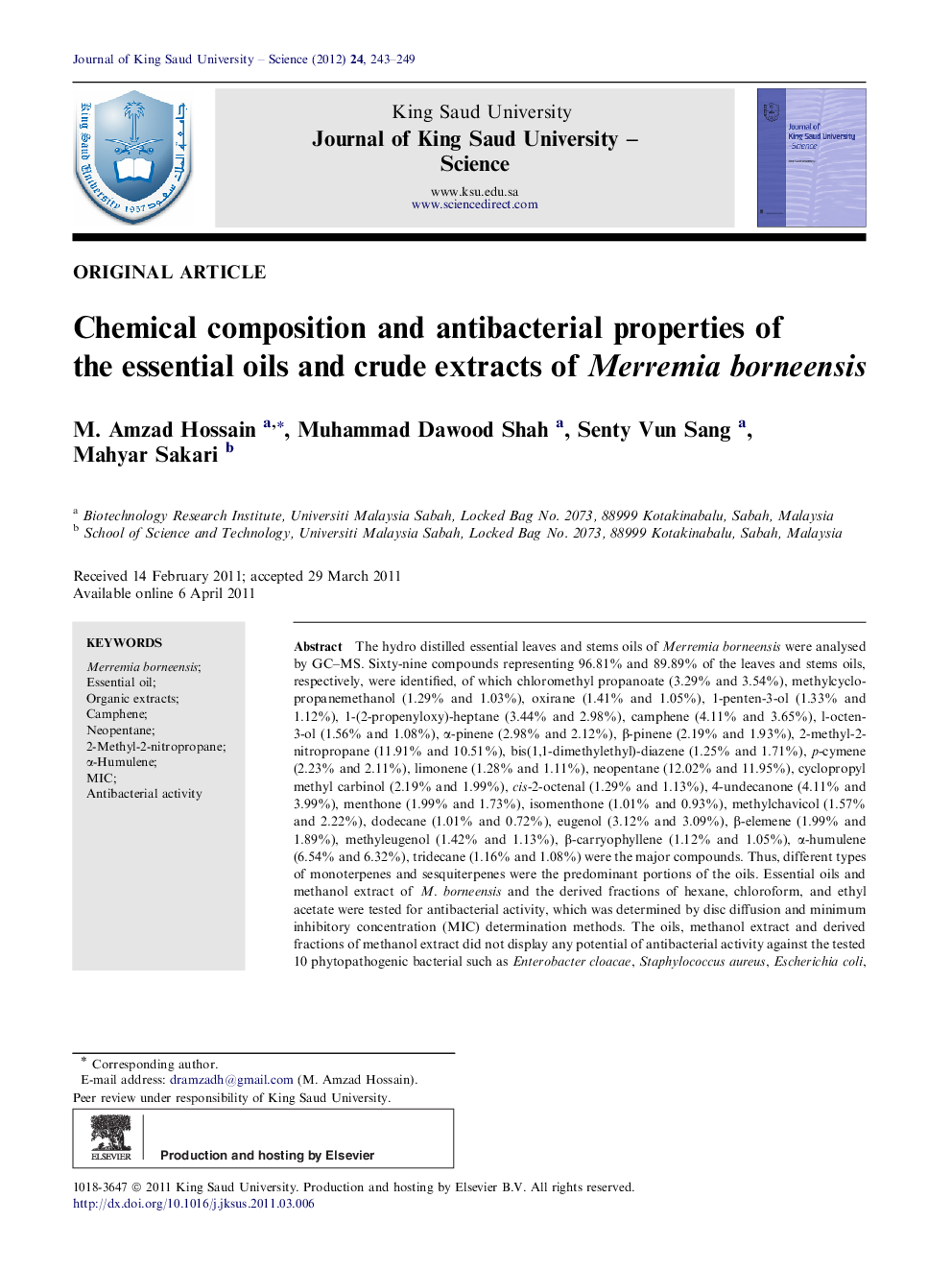| Article ID | Journal | Published Year | Pages | File Type |
|---|---|---|---|---|
| 827490 | Journal of King Saud University - Science | 2012 | 7 Pages |
The hydro distilled essential leaves and stems oils of Merremia borneensis were analysed by GC–MS. Sixty-nine compounds representing 96.81% and 89.89% of the leaves and stems oils, respectively, were identified, of which chloromethyl propanoate (3.29% and 3.54%), methylcyclopropanemethanol (1.29% and 1.03%), oxirane (1.41% and 1.05%), 1-penten-3-ol (1.33% and 1.12%), 1-(2-propenyloxy)-heptane (3.44% and 2.98%), camphene (4.11% and 3.65%), l-octen-3-ol (1.56% and 1.08%), α-pinene (2.98% and 2.12%), β-pinene (2.19% and 1.93%), 2-methyl-2-nitropropane (11.91% and 10.51%), bis(1,1-dimethylethyl)-diazene (1.25% and 1.71%), p-cymene (2.23% and 2.11%), limonene (1.28% and 1.11%), neopentane (12.02% and 11.95%), cyclopropyl methyl carbinol (2.19% and 1.99%), cis-2-octenal (1.29% and 1.13%), 4-undecanone (4.11% and 3.99%), menthone (1.99% and 1.73%), isomenthone (1.01% and 0.93%), methylchavicol (1.57% and 2.22%), dodecane (1.01% and 0.72%), eugenol (3.12% and 3.09%), β-elemene (1.99% and 1.89%), methyleugenol (1.42% and 1.13%), β-carryophyllene (1.12% and 1.05%), α-humulene (6.54% and 6.32%), tridecane (1.16% and 1.08%) were the major compounds. Thus, different types of monoterpenes and sesquiterpenes were the predominant portions of the oils. Essential oils and methanol extract of M. borneensis and the derived fractions of hexane, chloroform, and ethyl acetate were tested for antibacterial activity, which was determined by disc diffusion and minimum inhibitory concentration (MIC) determination methods. The oils, methanol extract and derived fractions of methanol extract did not display any potential of antibacterial activity against the tested 10 phytopathogenic bacterial such as Enterobacter cloacae, Staphylococcus aureus, Escherichia coli, Bacillus cereus, Salmonella typhimurium, Salmonella biafra, Klebsiella pneumoniae, Vibrio cholerae and Vibrio parahaemolyticus, in the range of 0% and minimum inhibitory concentration ranging from 25 to 100 μg/ml.
